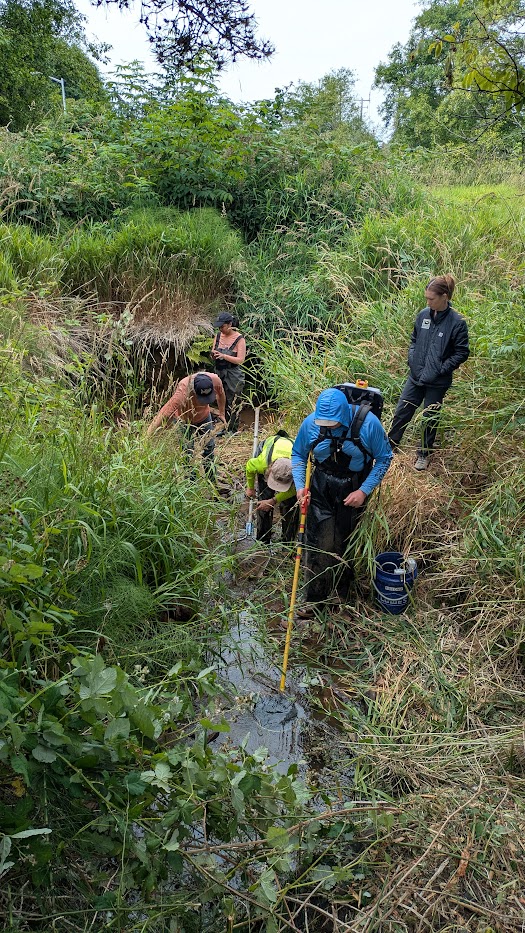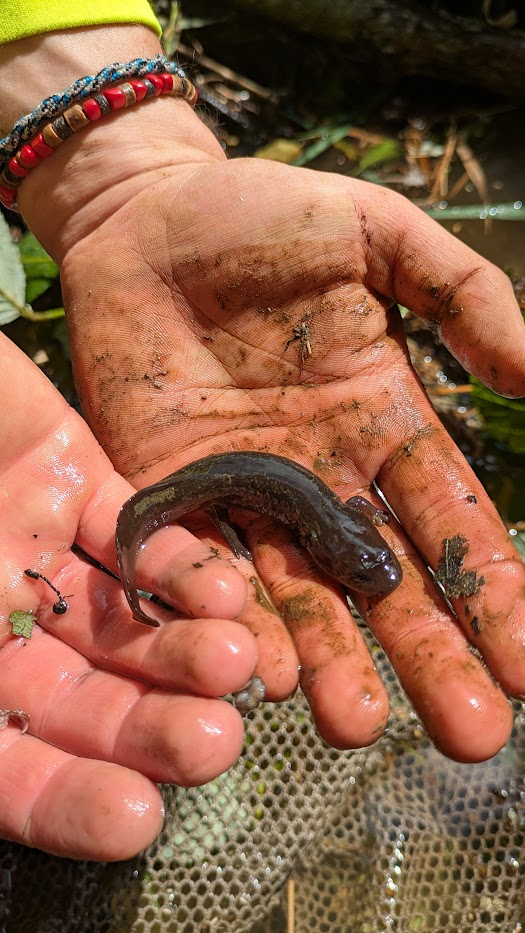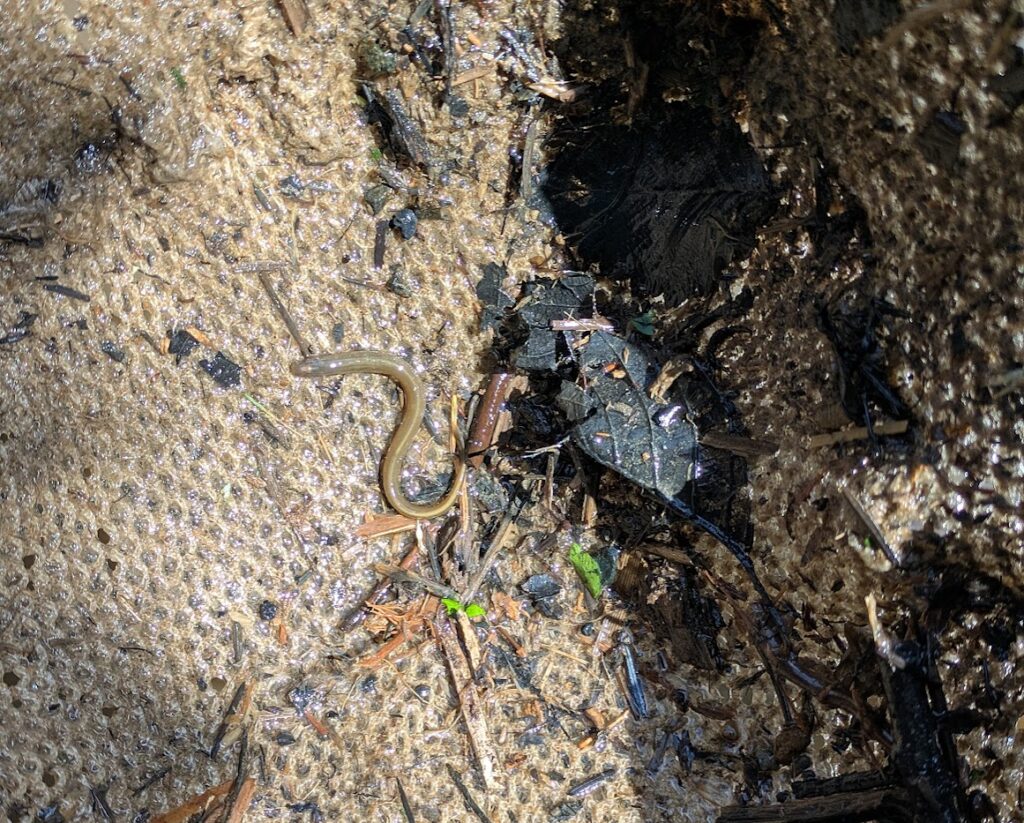Last week, our partners at Necanicum Watershed Council (NWC) completed a restoration project to remove a failing culvert at Thompson Creek, between our Thompson Creek Habitat Reserve and a neighboring property on the north end of Seaside.
The culvert—located downstream of the stretch of Thompson Creek where we often see spawning coho salmon—had collapsed and the road across it was caving in. Not only was the culvert a partial barrier to fish passage because of its size, but it also was collecting debris.

Neither the small section of road nor the culvert was still needed by the neighbor, so the culvert was removed and the road decommissioned during the project, which took place on July 21 and 22.
NWC Stewardship & Restoration Director Djennyfer de Melo Ferreira oversaw the project for the watershed council, which also received a small grant to complete the work. Our Thompson Creek Habitat Reserve was used as a staging area.
Mel Allen, NCLC’s temporary stewardship assistant, also was on site the first day of the project to help with fish salvage, which involved electro-fishing and removing the fish and other critters from the work area so they wouldn’t be harmed. They were placed downstream of the work site, with the hope “they can recolonize that area once it’s been restored,” Mel says.
Some of the aquatic species she observed and helped relocate during the project included lamprey, freshwater sculpin, red-legged frogs, crawfish, and salmonids, which are of high concern. She also rehomed two Pacific giant salamanders who were inhabiting the culvert.
“It’s rewarding I get to work on projects that are making the environment better for them and helping them be successful,” she says.
Her primary focus was moving the animals so they couldn’t be hurt during the culvert-removal process, but it also gave further insight about which species are inhabiting the Thompson Creek system.
“The fact that there was lamprey and we found two Pacific giant salamanders was really interesting,” Mel says. “You’d never have any idea there were lamprey unless you happened to be there, or happened to be there at the right time.”
Although Thompson Creek is a relatively small system, it’s highly productive for coho. The entire property will benefit by this project and the improving of fish habitat.
Later this fall, we plan to again partner with the watershed council for a few stewardship work parties to plant willows and shrubs along the bank of this newly free-flowing section of Thompson Creek. Additionally, we look forward to collaborating with them on other restoration opportunities along the Thompson Creek system in the near future.
“This gives immediate relief and opens up habitat for salmon until additional restoration can happen,” Melissa says.
Mel agreed, adding, “The spawning coho can now access the upper part of Thompson Creek. It’s important for expanding their range and creating more spawning habitat.”


Comments